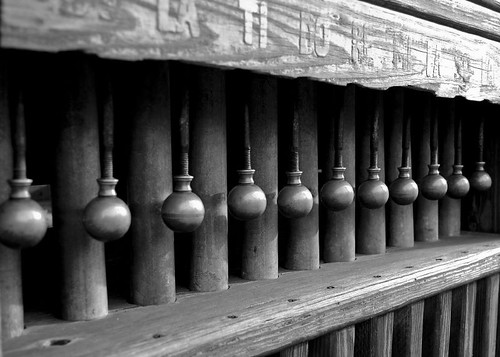
So far, I've been probably boring most of my beloved blog readers with more photography geekery than you are willing to handle. Either way, this next tip, if used and understood well, can really help your low-light photography a whole lot.
To review, we have learned that in order to get a good exposure in a photo, we need to balance the choice of aperture (f-stop) number with the shutter speed. To get more light for our exposure, we can choose to choose a wide aperture, such as F/2.8 or slow down our shutter speed. If we were shooting in full manual mode, we would need to depend on both of these adjustments to get our correct exposure.
But what happens when you max out these settings and its still not enough light to get a correct exposure? Let's say I'm shooting an indoor basketball game, and my lens is stopped down as far as it can (say F/3.5) and the shutter speed is as slow as I can make it to stop the action (around 1/500th of a second) and my images are still coming out too dark? Well, to borrow from Apple's iPhone commercial, "There's an app for that.". Okay, not really, but there is a setting. It's called, ISO. ISO, which stands for International Standards Organization (don't ask), is a rating to the amount of sensitivity your sensor has to light. The higher the number, the more sensitive. So an ISO of 200 is less sensitive than an ISO of 800.
In the photography film world, you would buy a film that is rated at a specific ISO. However, in digital photography, we have the option to change this sensitivity on the fly. If my camera is not getting a good exposure due to poor lighting conditions, I can choose to change my camera's ISO sensitivity to get more light. The increased number makes my camera's digital sensor more sensitive to the light, which gives me a better exposure.
It should be noted however, that the trade-off to ISO is digital noise. The higher the ISO number, the more noisy and grainy your images will look. It is generally advised to keep your ISO on your camera to its lowest rating for the best color quality and gradation. However, if you are in a situation where you need more light for the shot, this setting can be a great option. If you do not know where the ISO setting is on your camera, I suggest you read your manual or look for it. Take a few shots at different ISO numbers and check out the results. Some people actually like the look of digital noise in their shots, while others hate it.
To conclude on this nerdy stuff, we have been looking at the 3 elements of exposure, also known as the "exposure triangle" to photographers: aperture, shutter speed, and ISO. All 3 of these settings can make or break your shot. Learning how to use them will almost certainly help to make you a better photographer. That being said, the upcoming posts will focus on some of the modes of your camera and what they do and how I use them.
No comments:
Post a Comment